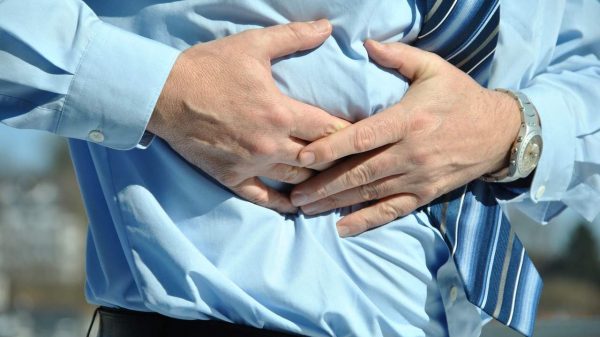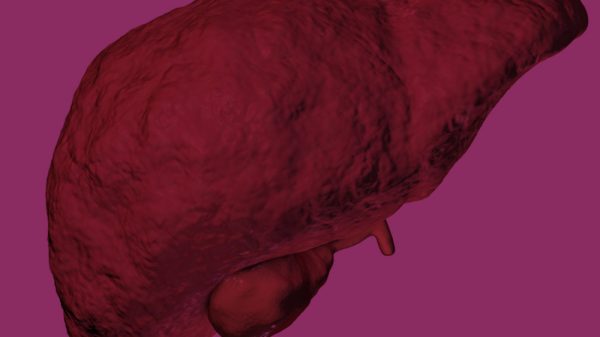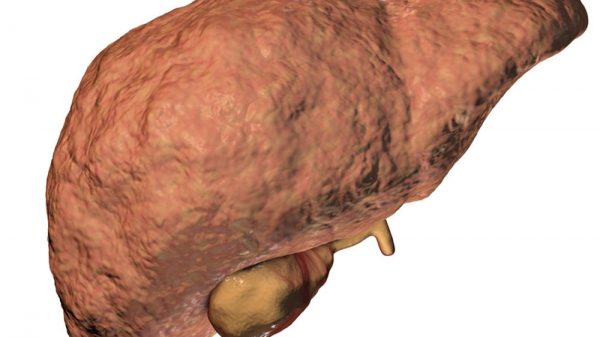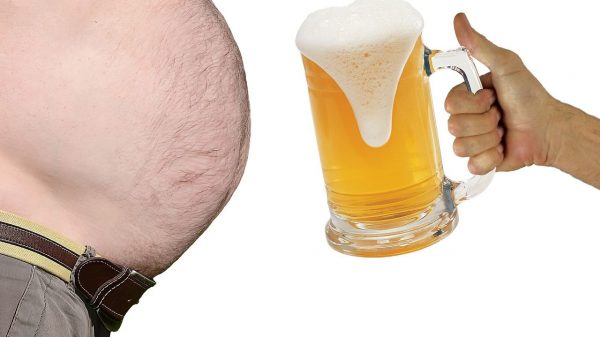Ascites is a medical condition involving the accumulation of fluid in the abdominal cavity. This condition is usually diagnosed by physical examination. Medical practitioners use the clinical term “tense ascites” to describe a palpatory discovery of large fluid volume ascites. Ascitic fluid volume, abdominal diaphragm, and wall elasticity and the splanchnic organs are all used in determining intraabdominal organs for a cirrhosis cause ascites which by the way is the most common cause of ascites. The combined determined volume of the splanchnic organs and ascitic fluid may remain the same but its pressure can differ based on the various degrees of the diaphragm and abdominal wall elasticity.
Initial accumulation of ascitic fluid results in a small increase in the tension of the abdominal wall. When the abdominal wall can stretch no further, the tension will rise quickly until an equilibrium is reached with the pressure of the secretion in newly formed ascites. Therefore a steady tension state represents the ascites secretion pressure. Ascites tension can be easily estimated through a simple measurement. Note that palpation cannot estimate this pressure, it has to be measured. Most patients with tense ascites maybe those with large ascites volume. It is actually rare to see an ascites that is truly tense.
Ascites Differential Diagnosis
Ascites can occur for several reasons. However about eighty-five percent of the time, it is caused by cirrhosis.
Other ascites causes that are associated with portal hypertension include the acute stage of liver failure, heart failure, alcoholic hepatitis, final phase renal disease, constrictive pericarditis, and hepatic venous-occlusive.
Infections and cancer may also result in ascites due to the increased production of fluid in the abdominal or peritoneal cavity surpassing its resorptive capacity. Ovarian and pancreatic cancers are the most common which results in ascites. The next is colon cancer than other types of abdominal cancers, uterine, breast and lymphoma cancer.
Resultant reduction of oncotic pressure and hypoalbuminemia may cause ascites in malnutrition, nephrotic syndrome, and protein-losing enteropathy. Hypoalbuminemia contributes to ascites development in cirrhosis too.
Pancreatic ascites may take place with chronic or acute pancreatitis after pancreatic trauma or leaking pseudocyst.
Approximately five percent of ascites cases have the above two causes, it is called “mixed ascites.”
Finally, elevated abdominal girth may be developed for nonascites reasons like tumor, obesity, bowel obstruction or huge intra-abdominal cysts.
Tense Ascites Diagnosis
Diagnosing the quantity and presence of ascites in most patients is usually difficult. But you tense ascites can readily be diagnosed through a physical exam. The abdominal wall bulges impressively and the collateral veins are prominent. Those whose tense ascites are less tense will have dull flank and/or bulging.
Other physical examination methods for detecting these ascites by abdomen percussion to check for dullness. However, the outlook with low sensitivity and poor specificity compared to flank dullness.
Treatment
Ascites may not be a life-threatening condition but it is a signal that something is wrong with a body function and this has to be taken seriously.
Unfortunately, some of these causes can not be reversed and such the ascites may not have any permanent treatment. But in the meantime, the accumulated fluid can be extracted continuously through a process known as abdominal tap or paracentesis.
This procedure involves inserting a needle into the abdominal cavity which will suck the fluid into the syringe. Patients with tense ascites would most likely need a large volume abdominal tap or paracentesis especially as they wait for the salt restriction and diuretics to take on a full effect.
Some patients are sensitive to diuretics and as such would need not have to undergo this paracentesis procedure frequently. No exact fluid amount is generally agreed on as being safe to remove. This most likely differs per case but five or fewer liters may be safely extracted without having to infuse albumin.
The approach of administering more than five liters of albumin after a large volume paracentesis (LVP) is somewhat controversial. A meta-analysis, however, reported that there were mortality benefits if albumin is given post LVP compared to another type of plasma expanders.
This analysis did not, however, include controlled placebo trails so the superiority of albumin is quite questionable here. Most clinicians are likely to administer albumin after an LVP for underlying hypotension patients or those with renal dysfunction. The reason being that this group of patients will benefit more.
If albumin will be given it is usually administered at a six to eight grams per fluid liter that were removed.
Management
For patients with ascites above 1.1 g/dl and the same gradient of serum to ascites albumin, the following management approach will be taken:
Restriction of sodium to less than 2000 daily. Dietitian would be helpful here to draw up a meal plan for the patient that avoid hidden sodium (salt) present in a lot of food products. The caution has to be taken so as not to be overly strict with this sodium restriction especially as most patients with cirrhosis are already malnourished and it will be unpalatable to have an extremely low sodium intake.
Restricting fluids appear to be of little importance compared with sodium restriction. It is however essential for moderate to serious hyponatremia. Patients should certainly be instructed not to take an unreasonable fluid amount.
Diuretics usage increases the excretion of urinary sodium and is needed in most ascites patients. Furosemide and spironolactone are typically prescribed in a 5:2 ratio beginning with low doses and gradually increasing as the renal system permits. This ratio will achieve a good natriuresis at the same time maintaining normokalemia. There may be a need to use loop diuretics intravenously especially in cases of high renal failure risks.
Finally, any attempt targeted towards controlling or treating the underlying cause of tense ascites must abstain completely from alcohol.























